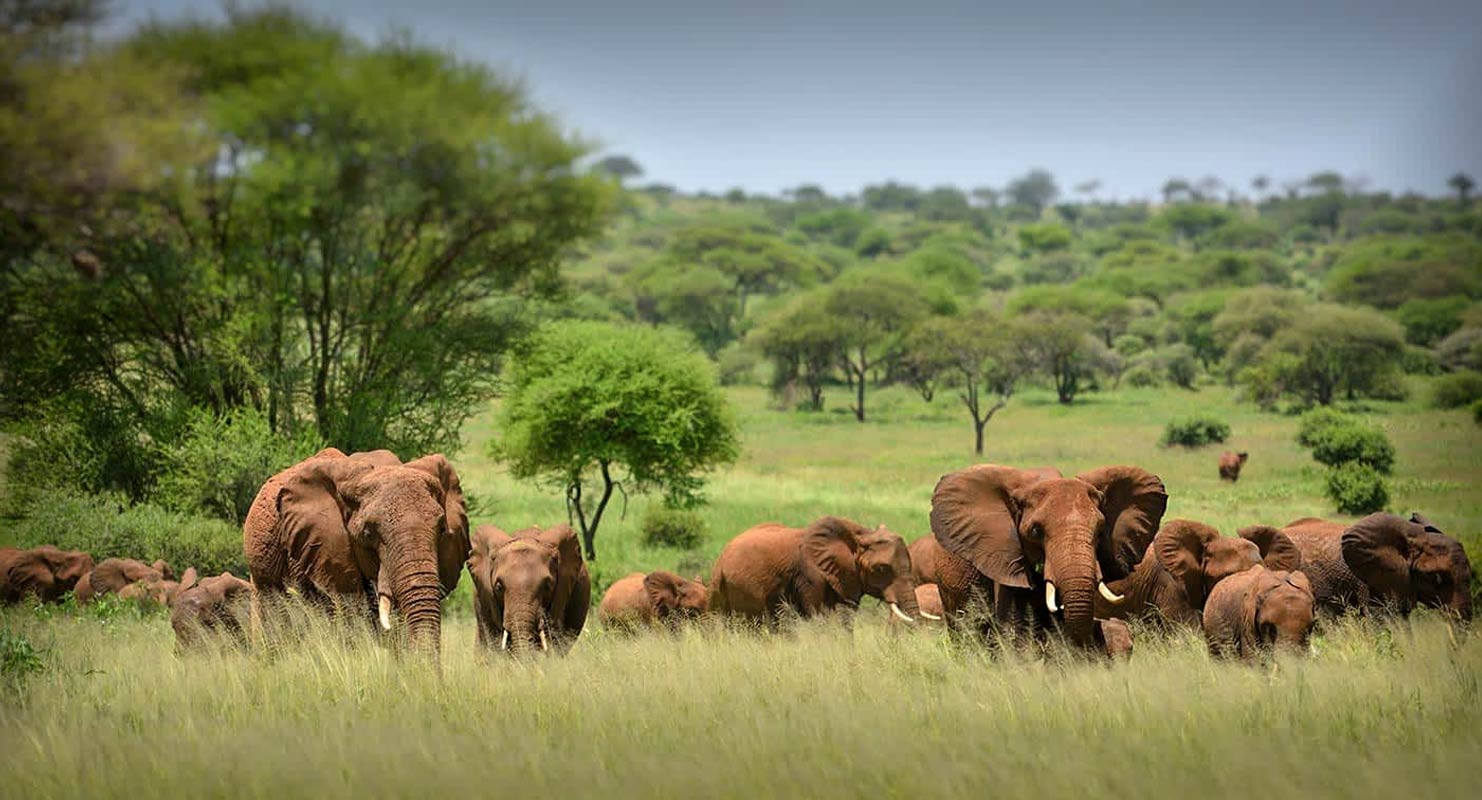Is most popular for its large elephant

AREA
VISITORS
Over 500,000+ per year
LOCATION
Northern Tanzania
Tarangire National Park
Tarangire National Park boasts an extraordinary concentration of elephants, making it one of the prime locations for observing these magnificent creatures in Tanzania. With its unique landscape adorned by baobab and acacia trees, Tarangire offers a picturesque and distinctive setting.
Situated just a short drive from Arusha, Tarangire is a popular destination for travelers exploring the northern safari circuit en route to Ngorongoro and the Serengeti. The park encompasses two game-controlled areas, allowing wildlife to roam freely across its vast expanse.
Before the arrival of the rainy season, a remarkable spectacle unfolds as herds of gazelles, wildebeests, zebras, and giraffes migrate to Tarangire’s open scrub plains—the last remaining grazing land. The park provides unparalleled game viewing opportunities, particularly during the dry season when elephants thrive. Families of these magnificent creatures can be observed playing among the ancient baobab trunks and stripping acacia bark from thorn trees for their nourishing afternoon feast. The panoramic views of the Maasai Steppe and the mountains to the south transform a visit to Tarangire into an unforgettable experience.
As the dry river bed is combed by herds of up to 300 elephants in search of underground streams, migratory wildebeests, zebras, buffalos, impalas, gazelles, hartebeests, and elands congregate around the diminishing lagoons. This concentration of wildlife outside the Serengeti ecosystem serves as a veritable smorgasbord for predators. Moreover, Tarangire is one of the few places in Tanzania where dry-country antelopes such as the graceful fringe-eared oryx and the distinctive long-necked gerenuk can be regularly observed.
During the rainy season, the park’s seasonal visitors disperse across a vast range of 20,000 square kilometers (12,500 square miles), until the lush plains are exhausted and the river beckons once again. However, encountering Tarangire’s elephant herds, regardless of the season, is almost guaranteed. The perpetually green swamps serve as a haven for 550 bird species, representing the highest breeding diversity found in any single habitat worldwide.
On the drier terrain, you may encounter the Kori bustard, the largest flying bird; the majestic stocking-thighed ostrich, the world’s largest bird; and small flocks of ground hornbills, their presence announced by their boisterous calls reminiscent of turkeys.
Keen bird enthusiasts might spot screeching gatherings of brilliantly colored yellow-collared lovebirds, along with the more modestly colored rufous-tailed weaver and ashy starling—species endemic to the dry savannah of north-central Tanzania.
Abandoned termite mounds often harbor colonies of endearing dwarf mongooses, while the vibrant calls of red-and-yellow barbets resonate as the birds engage in synchronized duets.
Tarangire is home to tree-climbing pythons, as well as lions and leopards that occasionally seek refuge in the branches, where the fruits of sausage trees cleverly conceal the flick of a tail.
Facts about Tarangire National Park
- The park is home to over 30,000 elephants, making it one of the largest elephant populations in Africa.
- The park is also home to a variety of other wildlife, including lions, leopards, cheetahs, buffalo, zebras, wildebeests, giraffes, and over 550 species of birds.
Tour ideas to get you dreaming
Featured Tanzania Safari Packages
North Serengeti Migration
7 Days 6 Nights
5 Days Ndutu Migration
5 Days 4 Nights
7 Days North Serengeti
7 Days 6 Nights
8 Days Ndutu Migration
8 Days 7 Nights
8 Days North Serengeti Migration
8 Days 7 Nights
9 Days -Tanzania Safari
9 Days 8 Nights
